First I had to slip past frightening cannons in front of the museum.
1 February Vijayapura (Bijapur)
After the usual idly, vada, and masala tea
breakfast, I checked out and got a three-wheeler to the train station. Again I
rode the 06541 Yesvantpur-Vijayawada Express, again late by a bit over an hour.
While waiting at the station a brave monkey tried a couple times to make off
with my backpack, far heavier than him. Monkeys know they can get a good feed of
bananas and chapattis from train passengers! The nearly empty train rolled
across the plains past farmlands and villages, took bridges over two wide arms
of a reservoir, and reached Vijayapur (Bijapur) in a little over three hours. A
nutty three-wheeler driver, far more interested in chatting on his phone than
taking me to my destination, eventually got me to Sabala Heritage Home
www.sabalaheritagehome.org. An
NGO that empowers women runs the place, located just outside the city to the
southeast. It’s a bit of a splurge at Rs. 4,860 ($68) including a buffet
breakfast, reserved through Booking.com. I worked on the journal and photos,
then joined an Indian couple, three women from Belgium and Netherlands, and
couples from France for a dinner buffet (Rs. 250). Food here is vegetarian and
some of the veggies come from the garden.
2 February Vijayapura
(Bijapur)
After the breakfast buffet, I dedicated the day to working on
journal writing and photo sorting. I took a lot of photos in the past week! I
also had the home-style lunch and dinner here.
3 February Vijayapura
(Bijapur)
On my 1983-84 bicycle ride north through India, this dusty city
marked the transition from sites of great Hindu kingdoms of the south to those
of great Islamic kingdoms in the north. The Adil Shahi kings ruled here from
1489 to 1686 and left behind two large mausoleums, mosques, and a great many
now-ruined palaces and fortifications. With the usual warm and sunny weather
plus a bit of haze and a few passing clouds, I got a three-wheeler to the city’s
biggest sight, Gol Gumbaz (Rs. 300 plus Rs. 25 camera fee). This cavernous
Indo-Islamic structure with a great dome—the world’s largest when
constructed—shelters the tombs of Adil Shah (r 1627-56), his two wives,
mistress, a daughter, and grandson. Rooftop finials and a bit of decorative
stucco add beauty to the otherwise plain structure. I climbed one of the
seven-story corner towers to a lofty viewing area that wraps around the base of
the dome, then took in fine views of the city with its domes poking up here and
there. Then I stepped inside the ‘whispering gallery’ at the base of the dome
where sounds carry remarkably well with a great echo.

First I had to slip past frightening cannons in front of the museum.

The imposing Gol Gumbaz
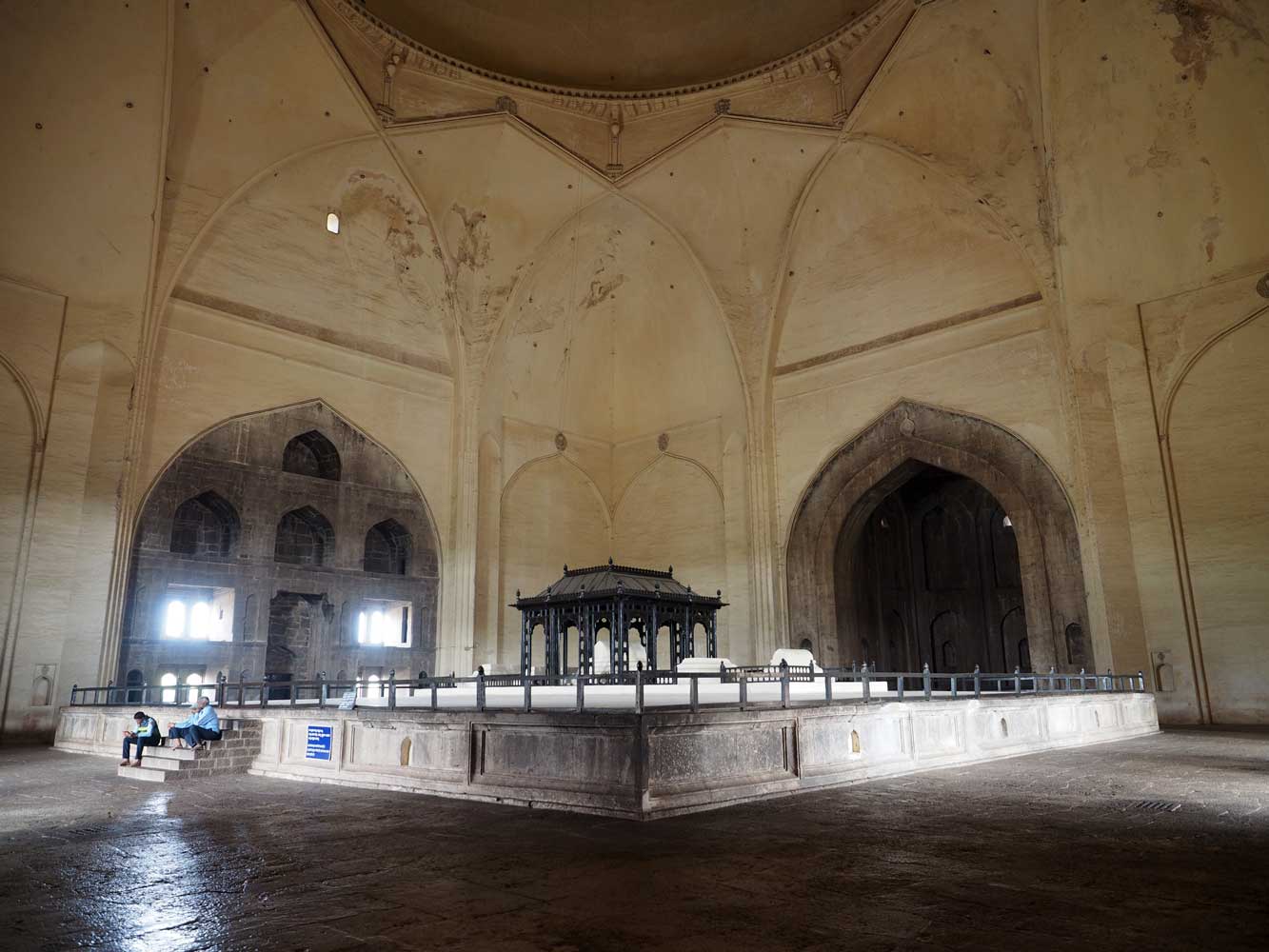
Tomb coverings sit atop a central platform.
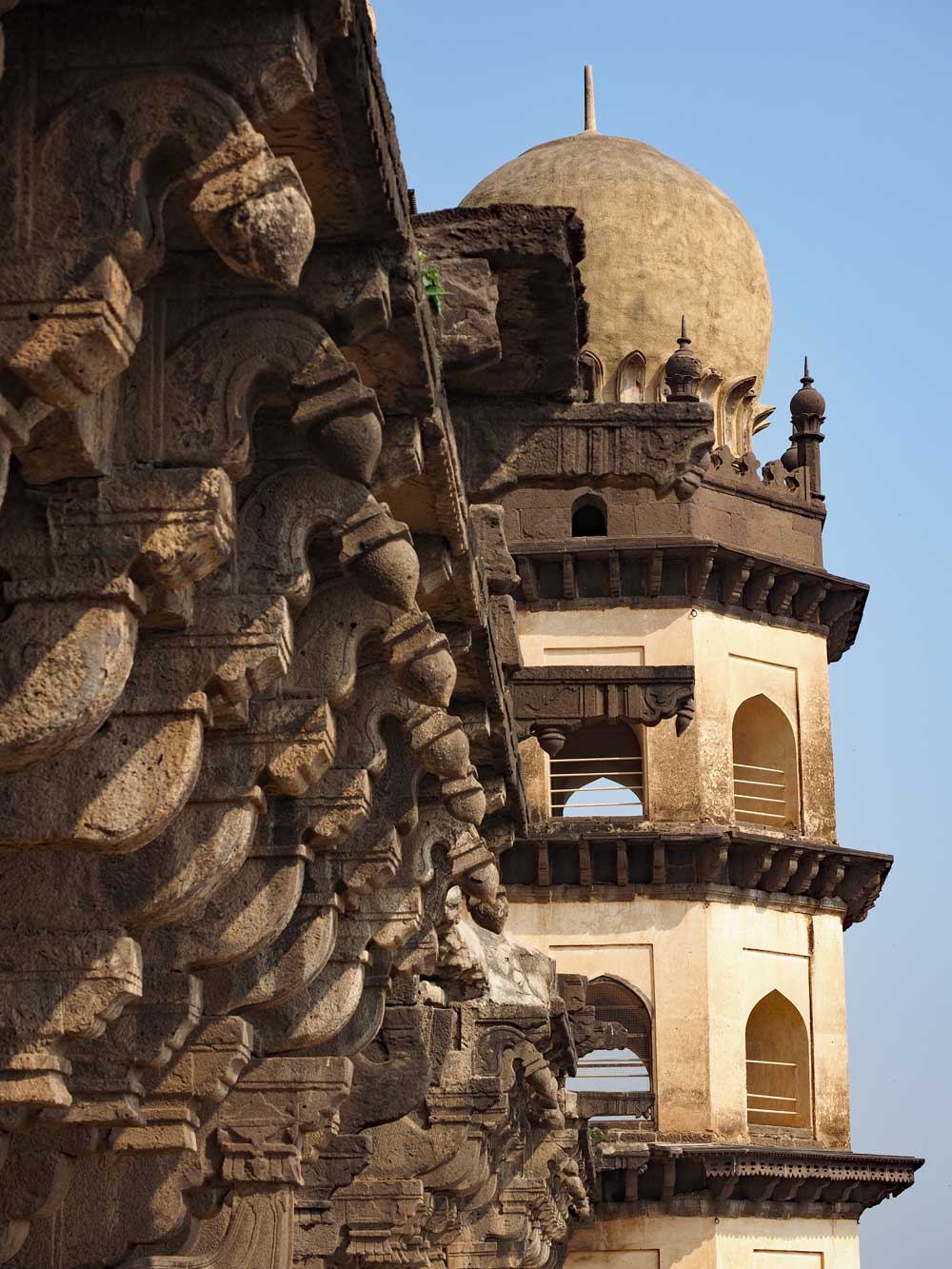
View near the top of the long climb up a corner tower

A pathway around the base of the dome gives close-up views of tomb
decoration as well as panoramas of the city.
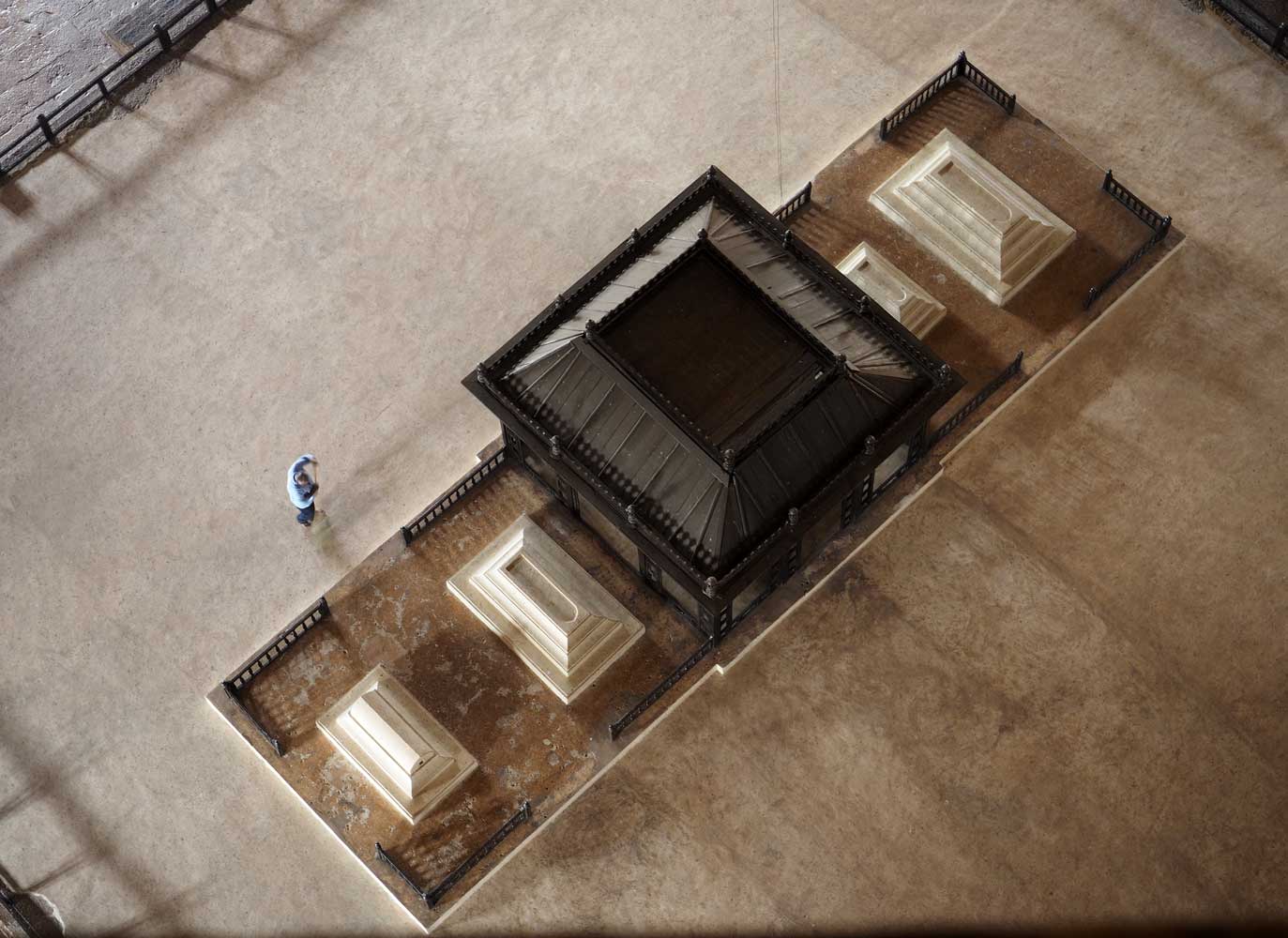
View from the ‘whispering gallery’
The much smaller
domed Gol Gumbaz Masjid stands just to the west, but was closed and seems
disused. Around to the south, a severe-looking stone building known as Naqqar
Khana (House of Drum) once offered a royal reception to the king’s visitors by
beating drums. Now it houses the Archaeological Museum (Rs. 5; no photos). I
first had a look downstairs at mostly battered Hindu stone sculptures and better
preserved Islamic decorative pieces and inscriptions, then climbed a long
staircase to see miniature paintings, bidri ornamental metal work, old
oriental carpets, Chinese porcelain, and weaponry.
A short three-wheeler
ride took me southwest to Jama Masjid, built by Ali Adil Shah I (r 1557-80) and
still in use with a large central dome and many graceful arches. Extensive
calligraphy and geometric designs grace the mihrab.

Central courtyard
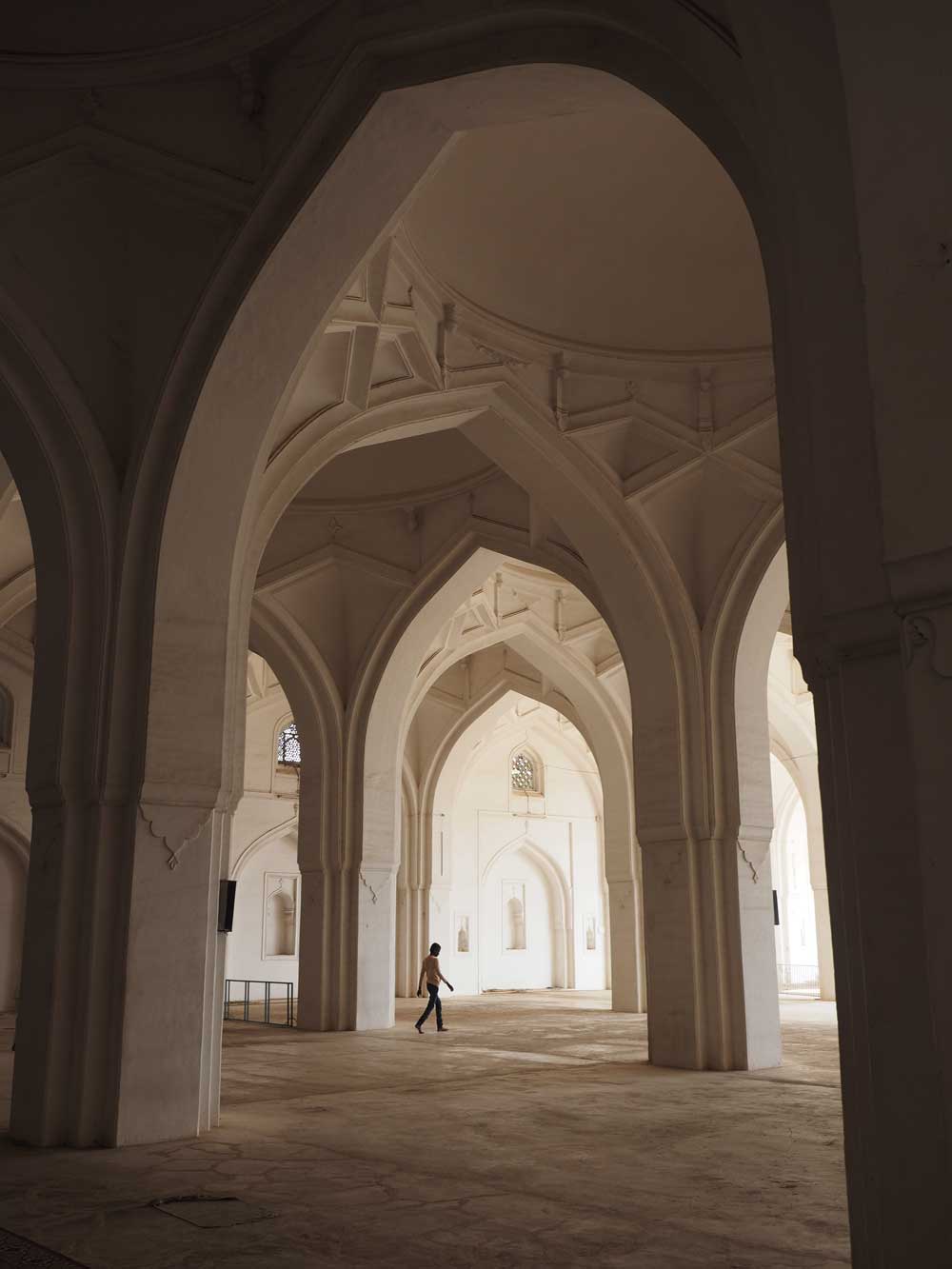
Many small domes surround the central one.
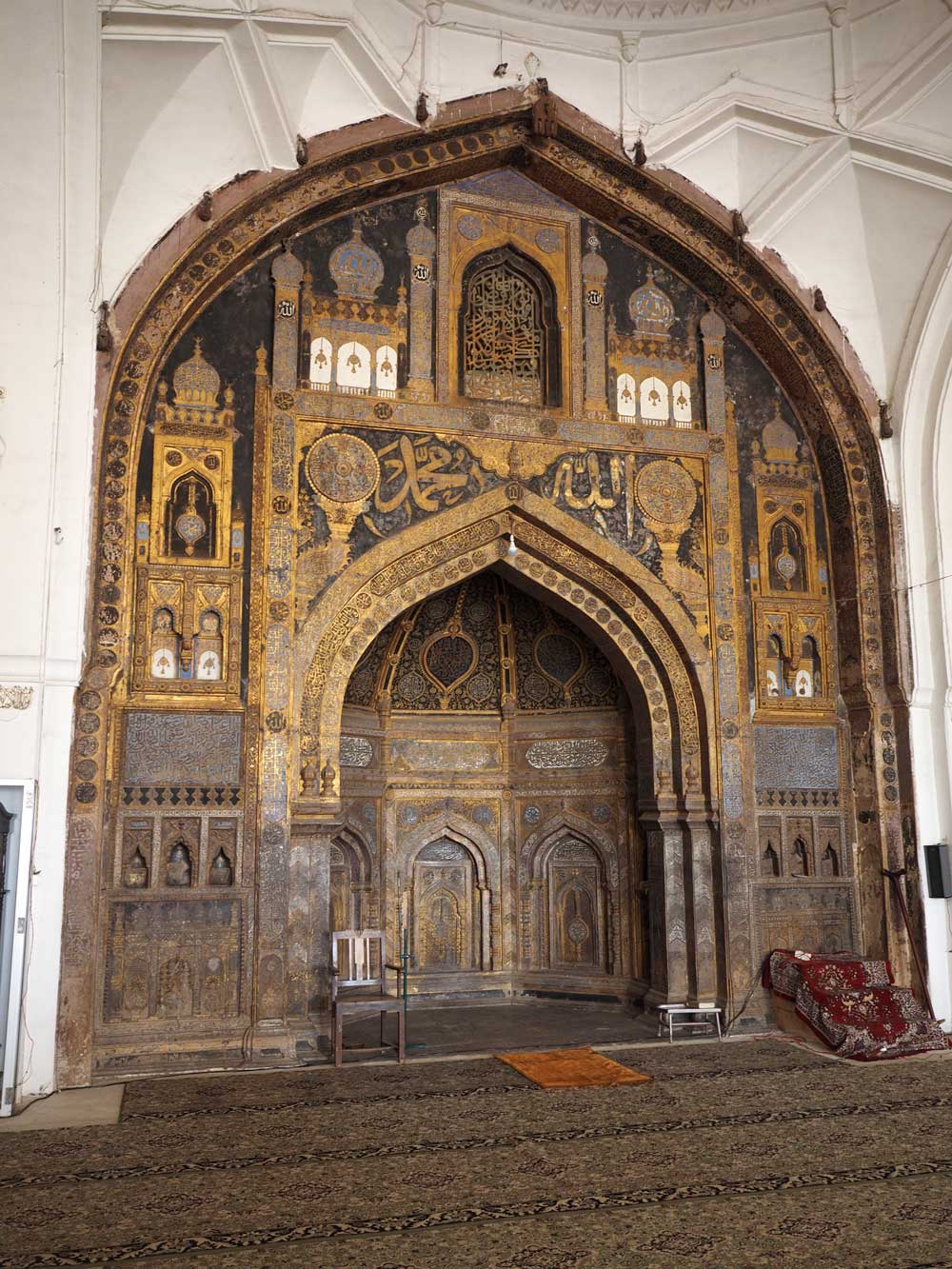
The wonderfully decorated mihrab
Farther west I came to the central area of the old kingdom with the well-preserved Asar Mahal, a large, plain, open-sided former hall of justice. There’s little to see here, and a man kept hassling me for Rs. 100. Nearby I passed through a massive wall fortification of the citadel to lofty arches and ruins of the Gagan Mahal palace (c. 1561) and on to the seven-story palace ruin Sat Manzil and other buildings. This area would make a lovely archaeological park, but is now a bit of a mess intermingled with government offices and commercial businesses. I walked north to Bara Kaman, the mausoleum of Ali Adil Shah II, now a maze of roofless arches.
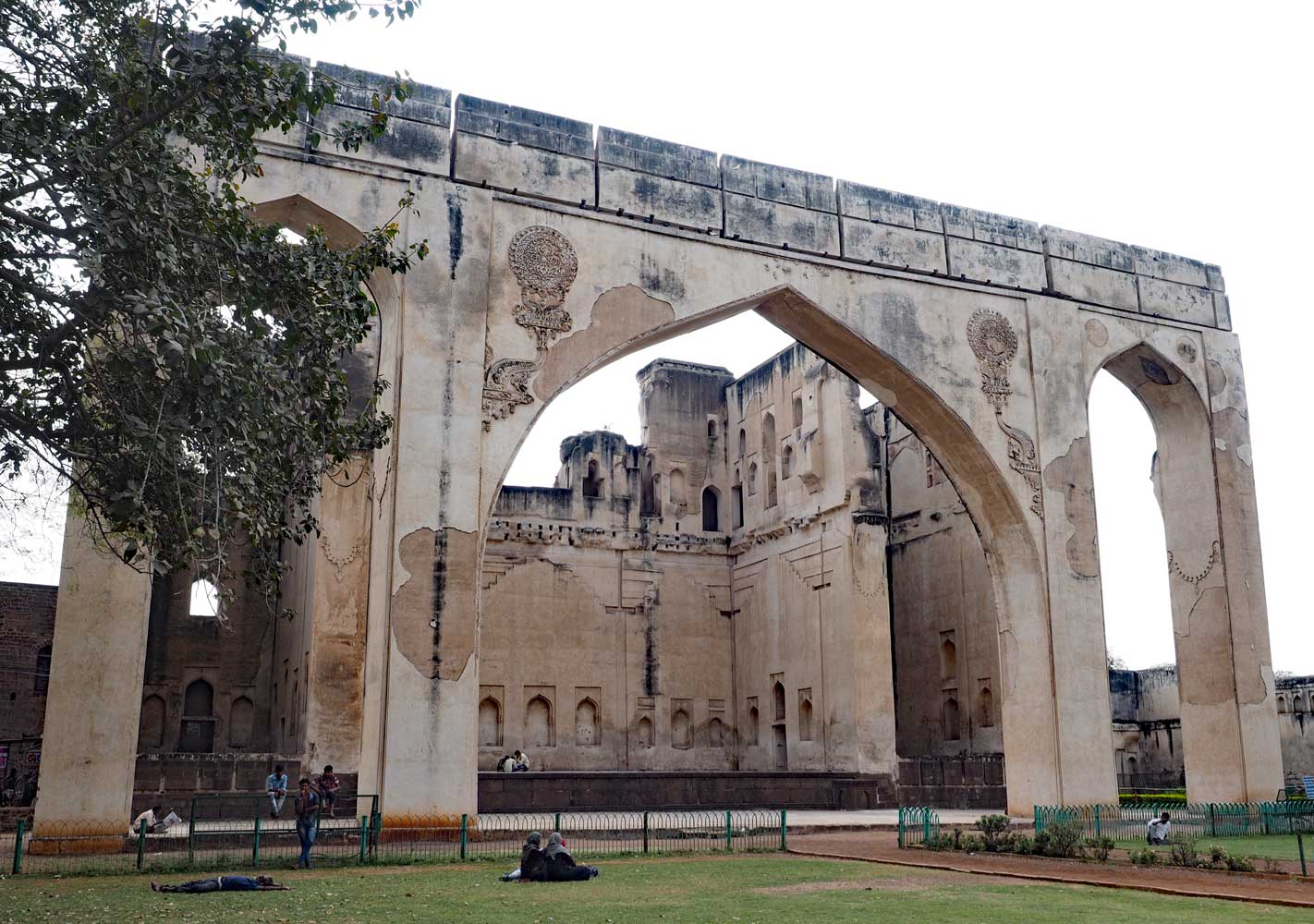
Gagan Mahal is missing sections of wall, yet the ruin still impresses with
its vast size.

Tombs rest under the sky in the center of Bara Kaman.
I got a three-wheeler for a ride west of the center to the other great mausoleum, Ibrahim Rouza, which holds the remains of emperor Ibrahim Adil Shah II (r 1580-1627), his queen, mother, and children. The elegant structure with its four 24-meter minarets may have provided inspiration for the Taj Mahal. The exterior walls have detailed designs in stucco and remnants of pigment. A domed mosque stands to the west across a now-dry water pool.
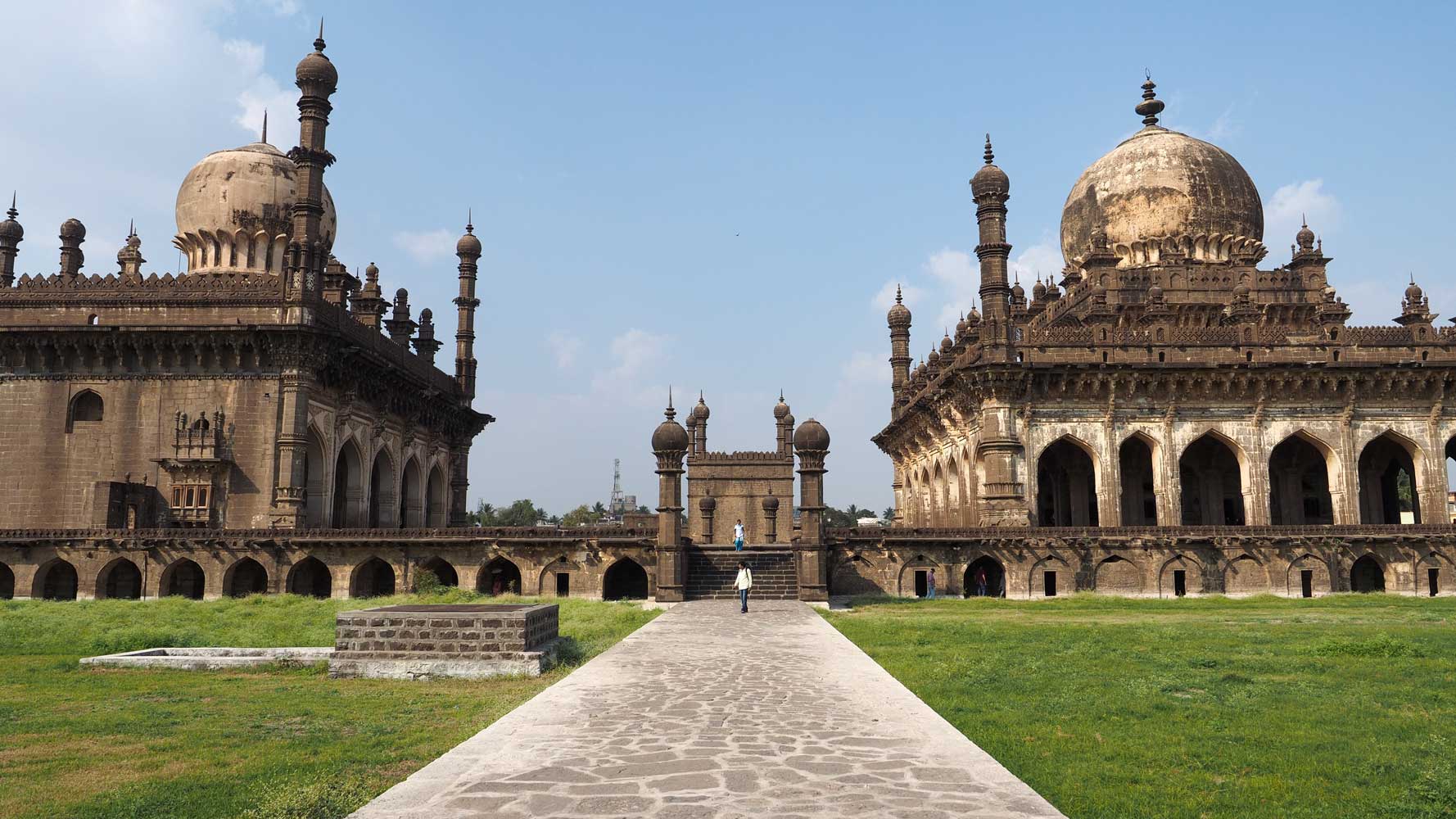
Mosque (left) and tomb (right) of Ibrahim Rouza

Tomb detail
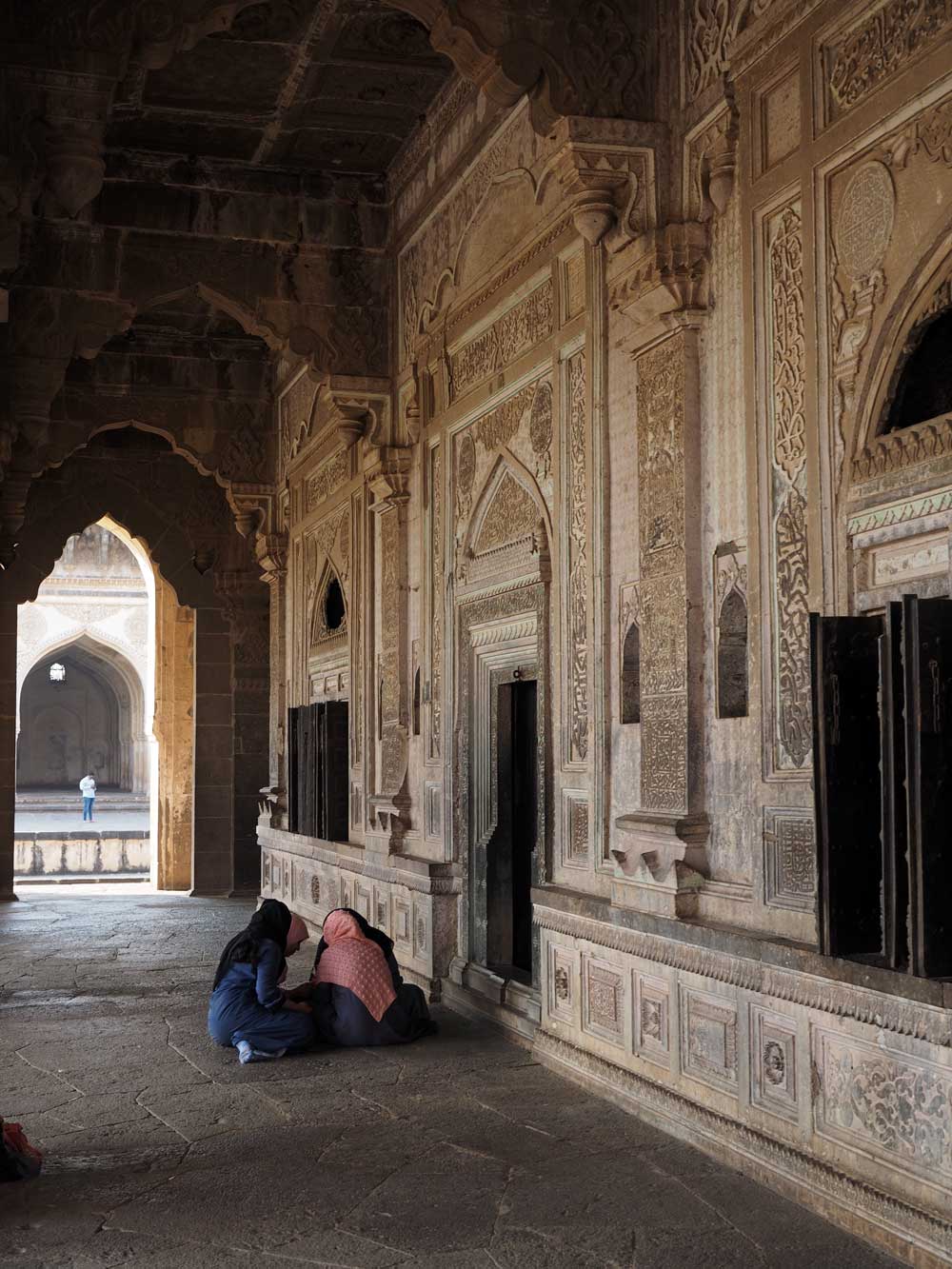
Intricate carvings grace the exterior walls of the tomb.
Back in town I swung by the Malik-e-Maidan, a super-sized bronze cannon atop a wall fortification. Cast in 1549, it weighs 55 tonnes, is almost 1.5 meters in diameter, and stretches more than 4 meters long. It came here as a war trophy, supposedly pulled by 10 elephants, 400 oxen, and hundreds of men. Nearby I climbed the massive 24-meter Upli Buruj tower, topped by a pair of big cannons, for a panoramic view of the city.
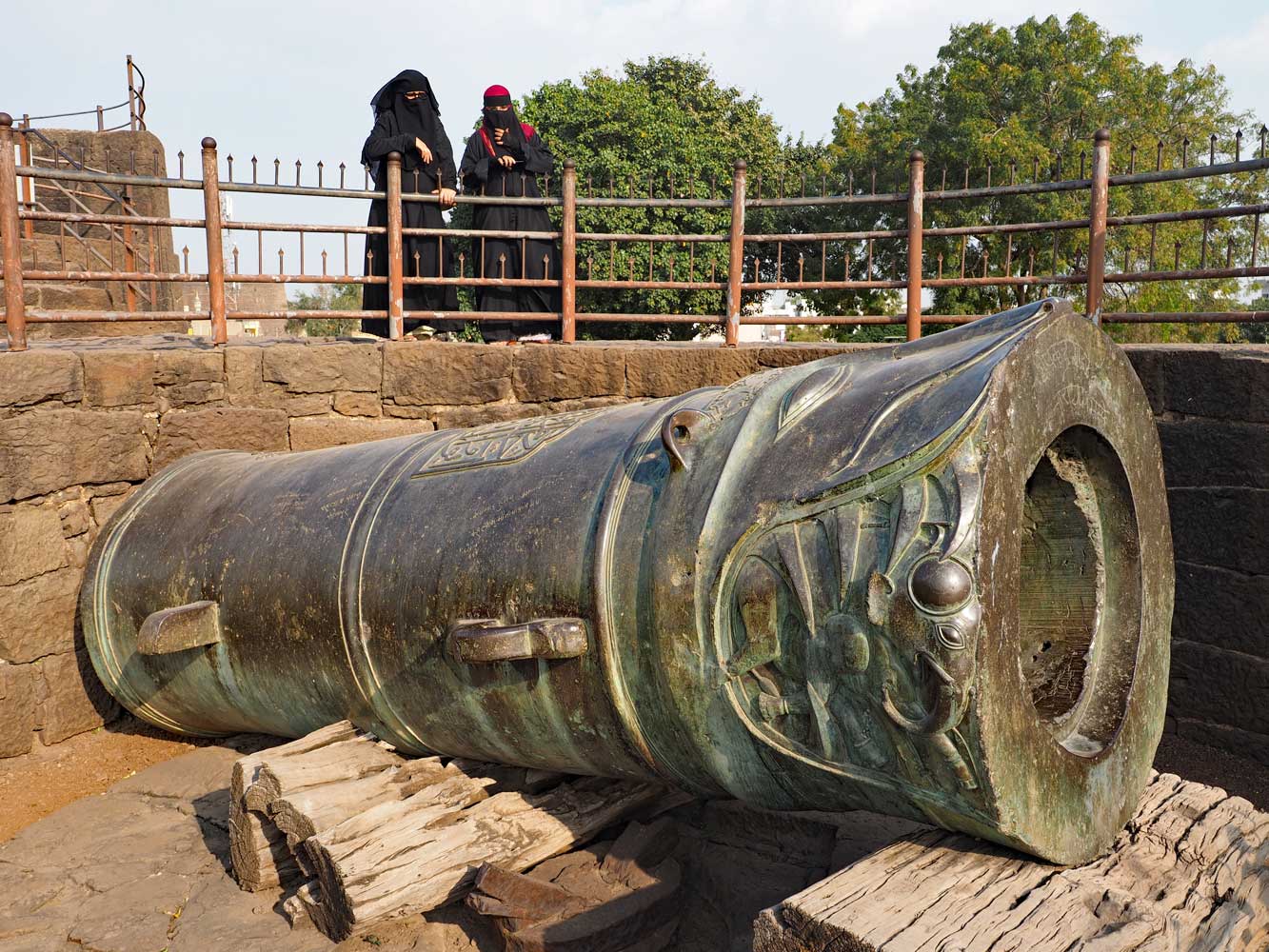
Teeth near the muzzle of Malik-e-Maidan have caught an elephant!
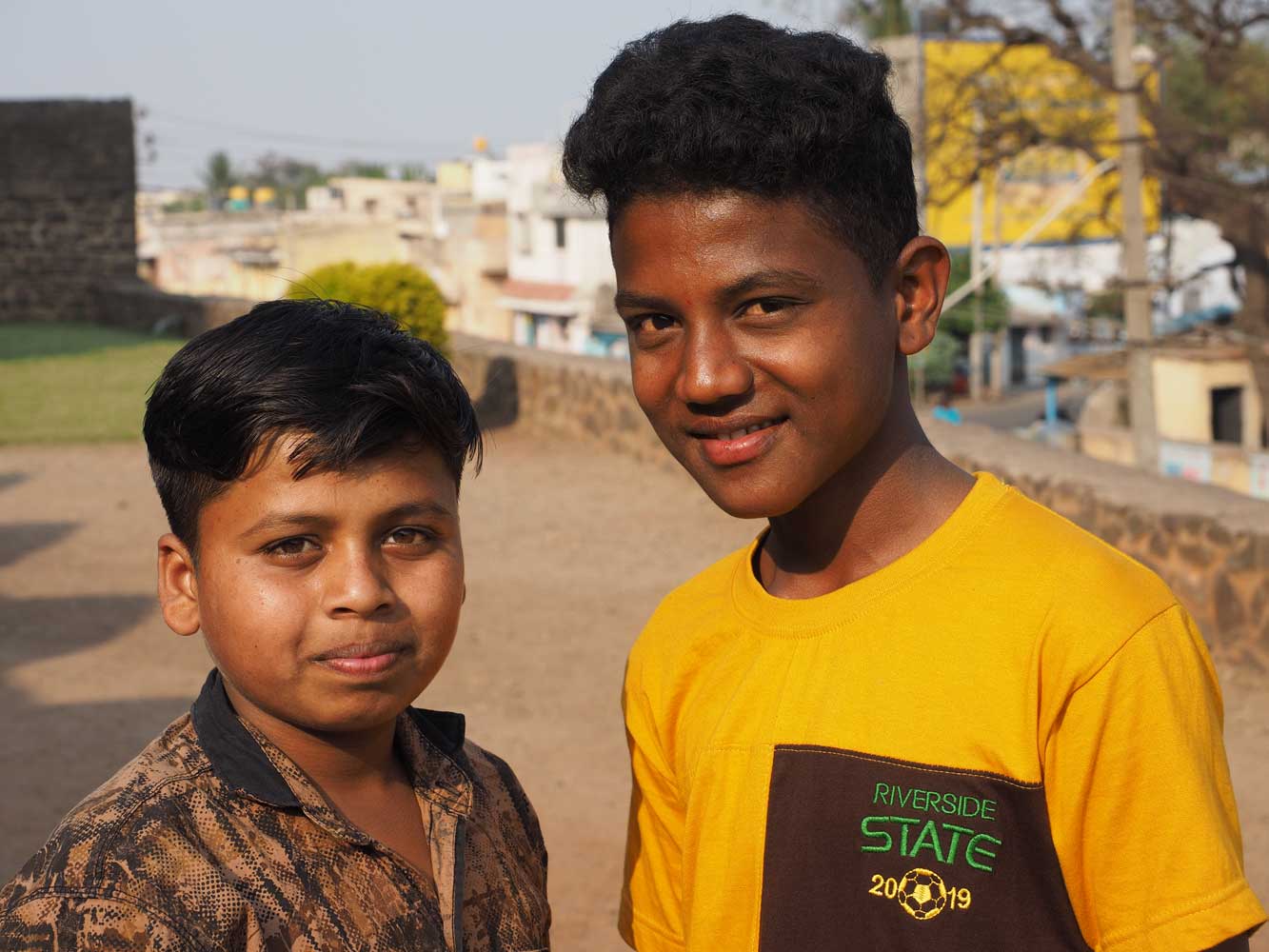
Local kids atop the old fortifications
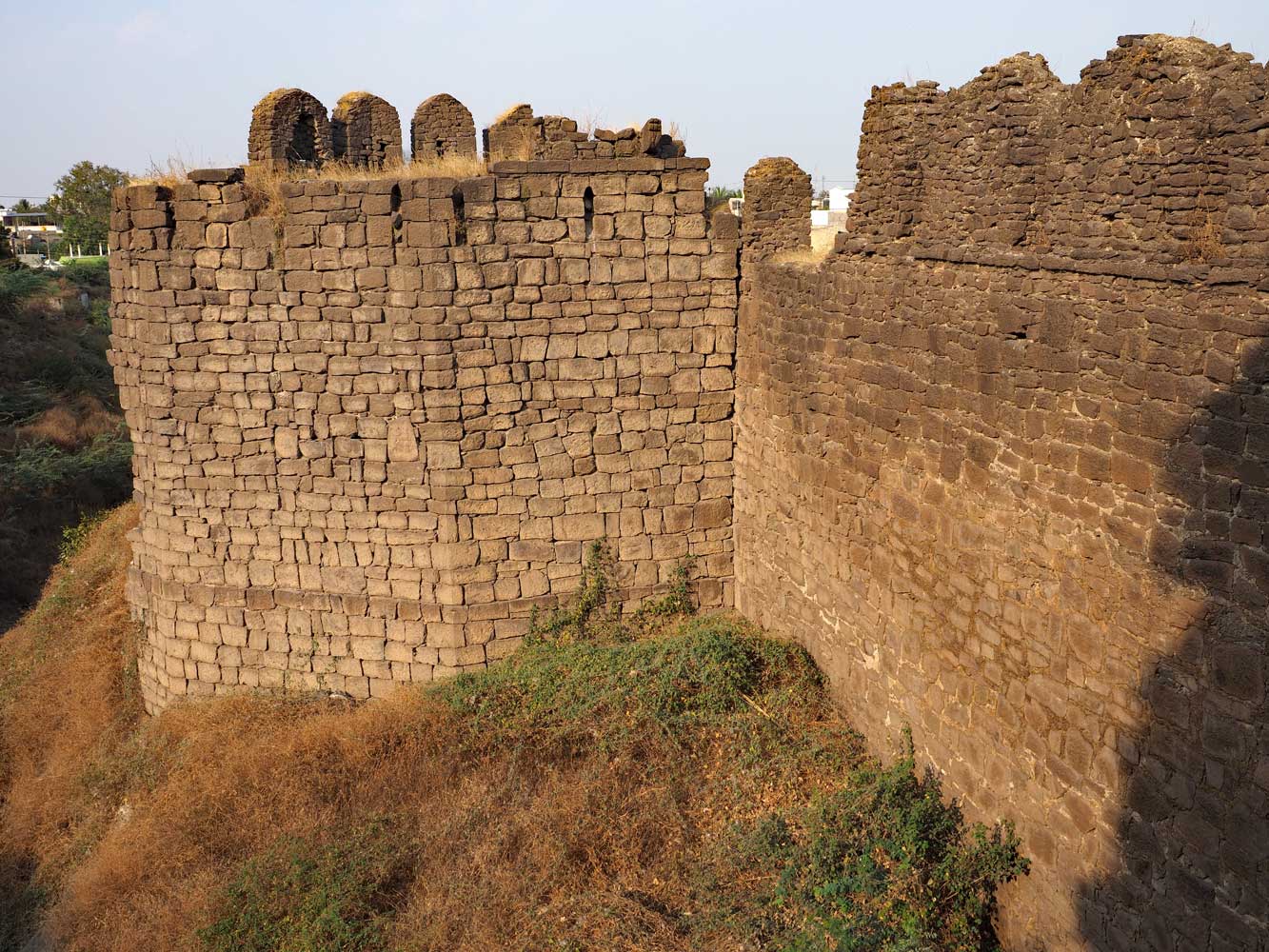
Many sections of old walls still encircle the city.
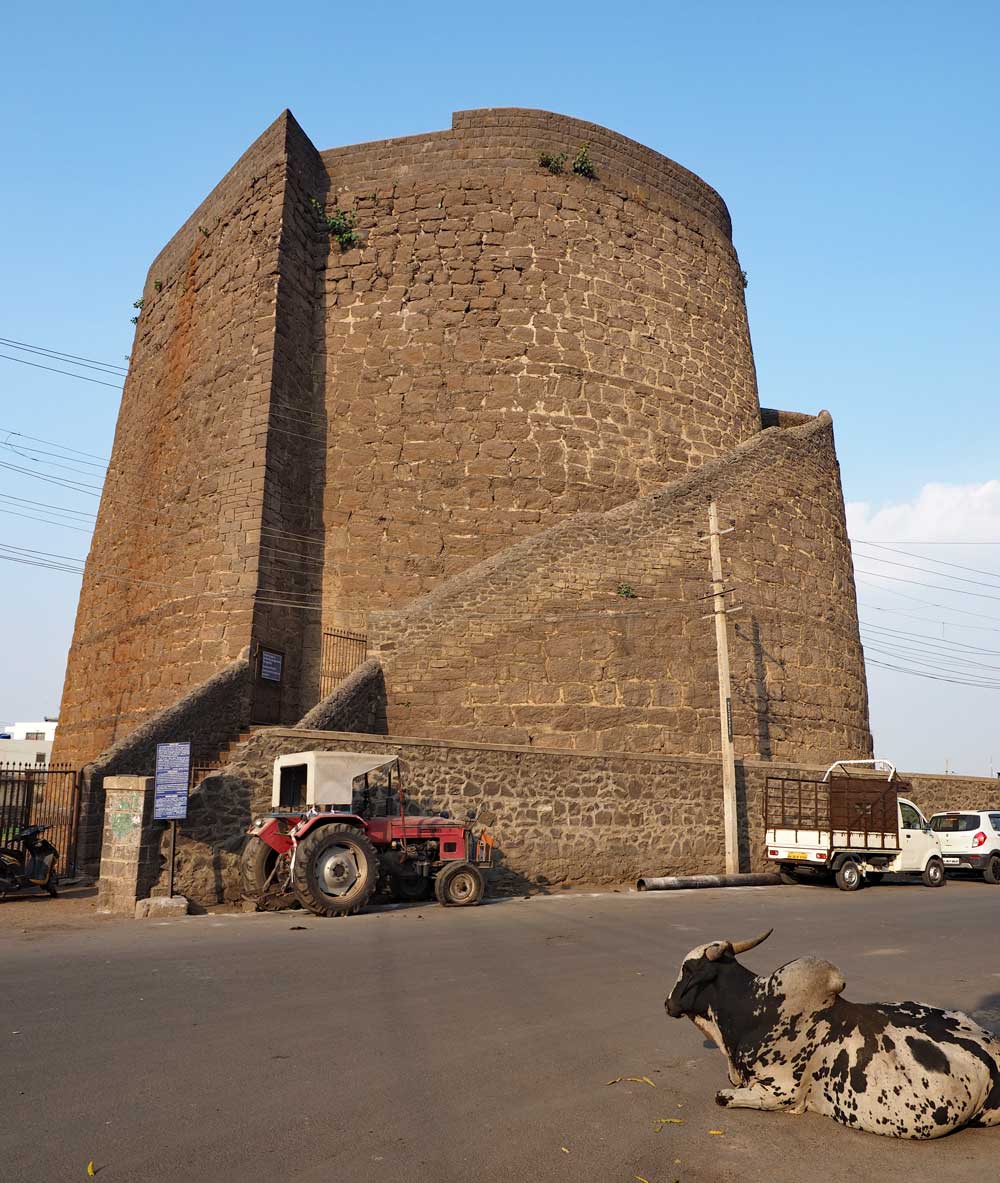
Stairway to the top of Upli Buruj tower.
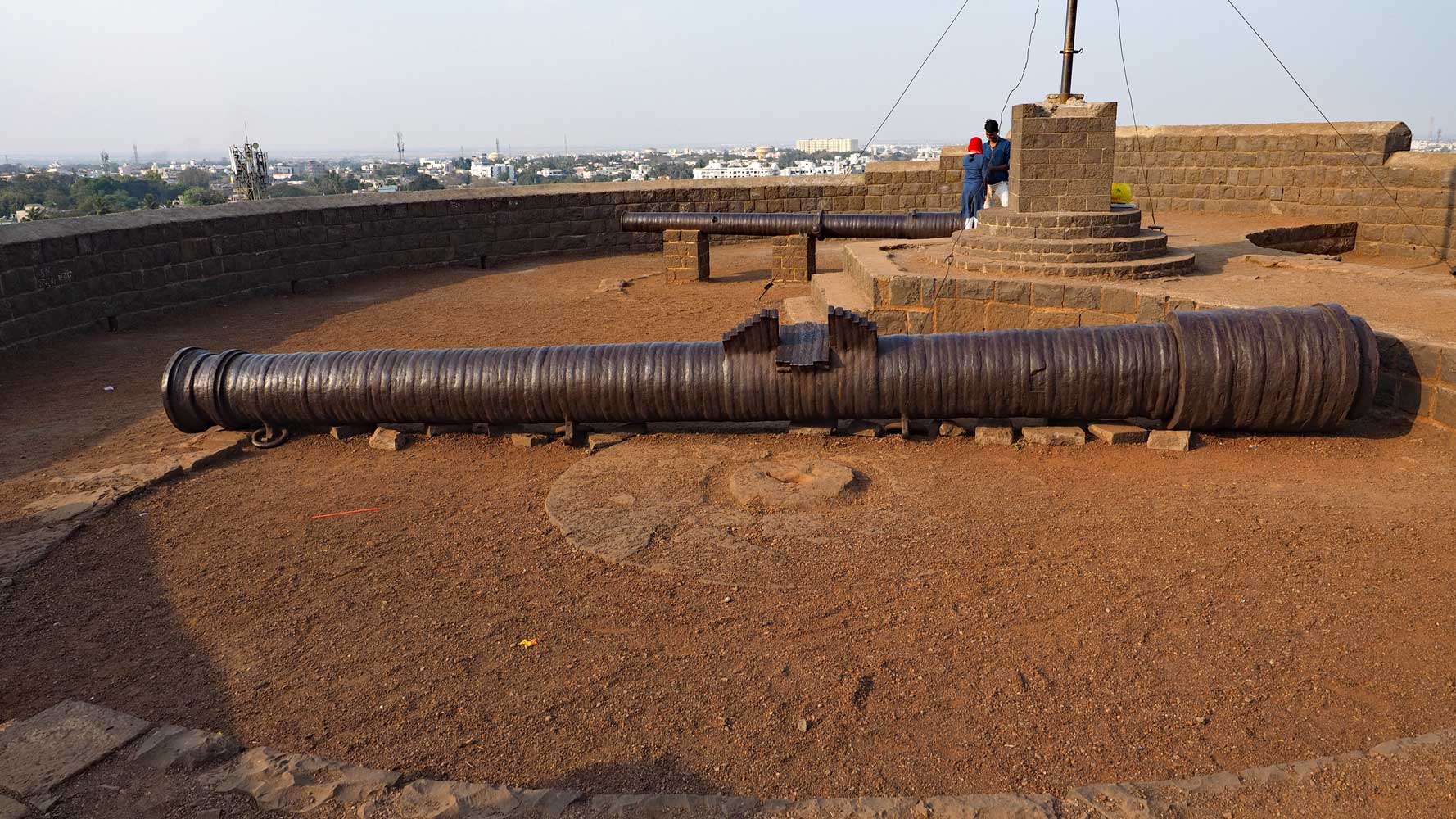
View from the tower top
My guidebook had the wrong hours for a vegetarian restaurant on
Station Road in the center; it had closed for late afternoon/early evening as
many Indian restaurants do. But Kamat Restaurant in nearby Kantishka
International Hotel was open and I got a tasty and filling South Indian thali.
4 February train Vijayapura-Mumbai
Yesterday evening I had a look on the
internet about the train 51031 “BJP Fast Pas” I planned to take to Mumbai and
found several mentions of it being canceled. Oddly neither the railway nor the
Hampi travel agent had emailed or messaged that the train was cancelled. This
morning the Sabala Heritage Home manager phoned her travel agent and was able to
confirm that the train had indeed been canceled. The agent would research other
train and bus options and let me know what’s available. Meanwhile I went over to
the heritage home’s office for wi-fi to post recent pages and photos to this
journal. The agent called back with the news that although the other train to
Mumbai this evening, the 11140 “GDG CSMT EXP,” didn’t have any through berths,
he cleverly put together two tickets on the train beginning with a ride of about
three hours in SL class (three-tier non air-conditioned) to Solapur, then the
rest of the distance in 3A class (three-tier air-conditioned) to Mumbai. The
agent emailed the tickets to the manager, who printed them out and I paid her
for the tickets, Rs. 1,310. The agent also told of two deluxe buses that ran
overnight and probably would have been OK, but the train would be more
comfortable and have the advantage of going all the way into the center of
Mumbai. Back in Hampi I had tried to get a ticket for this train, but the only
option was a First Class ticket, a bit expensive, so I went with the other
train.
I had lunch and worked sorting photos in the afternoon, then the
manager called a three-wheeler to take me to the train station. Here I asked
about a ticket refund for the canceled train, but was told that the refund would
automatically go back to the travel agent in Hampi. The amount was relatively
small and didn’t seem worth trying to get back. My train arrived on time and
everything worked well. At Solapur I simply walked to the next car for my berth,
and this happened to be the time when other passengers bedded down. The train
motion felt too rough for much sleep, but at least I got some rest.
On to Mumbai—Part 1
Back to beginning of “Backpacking 2020: India, Singapore, and Philippines”